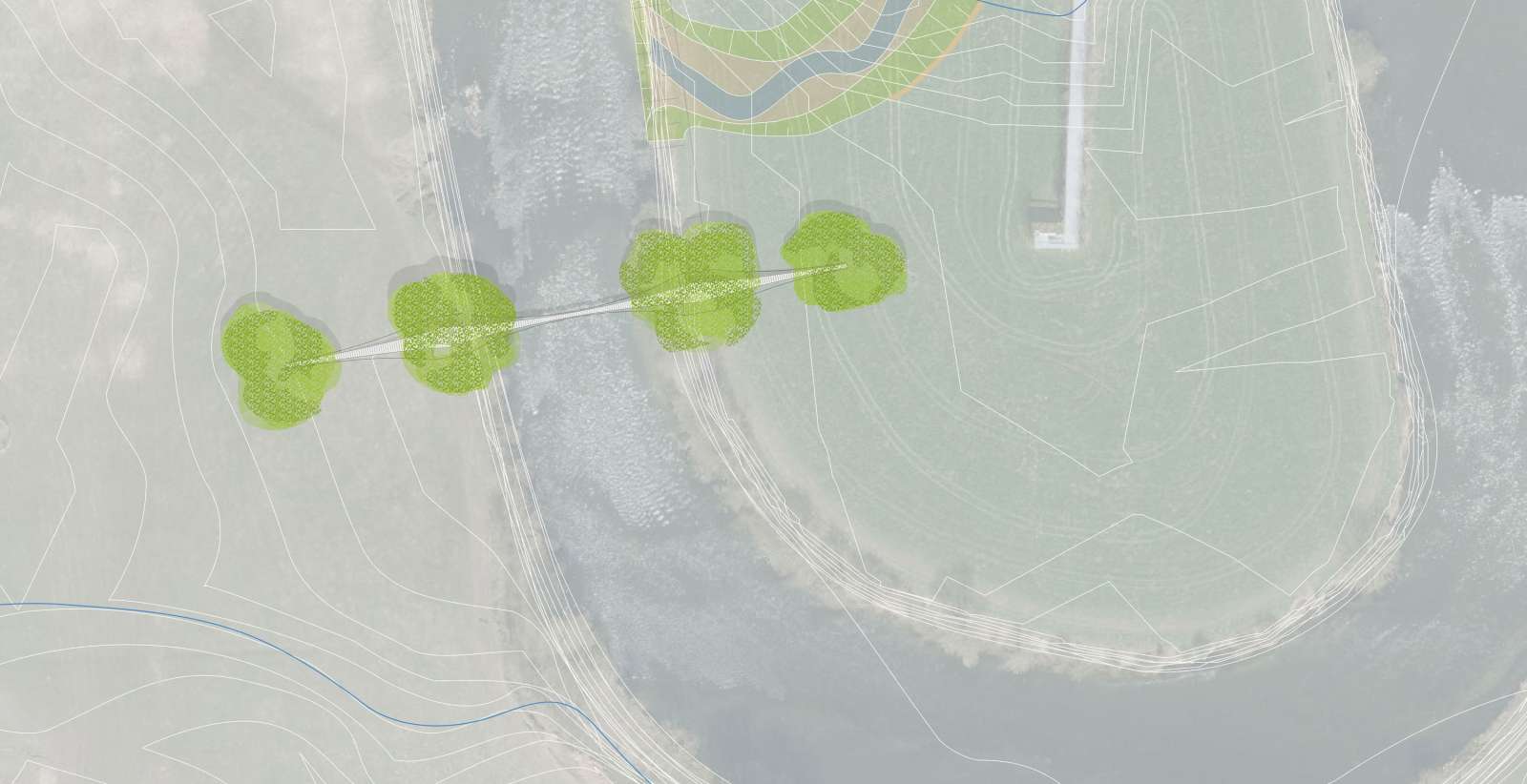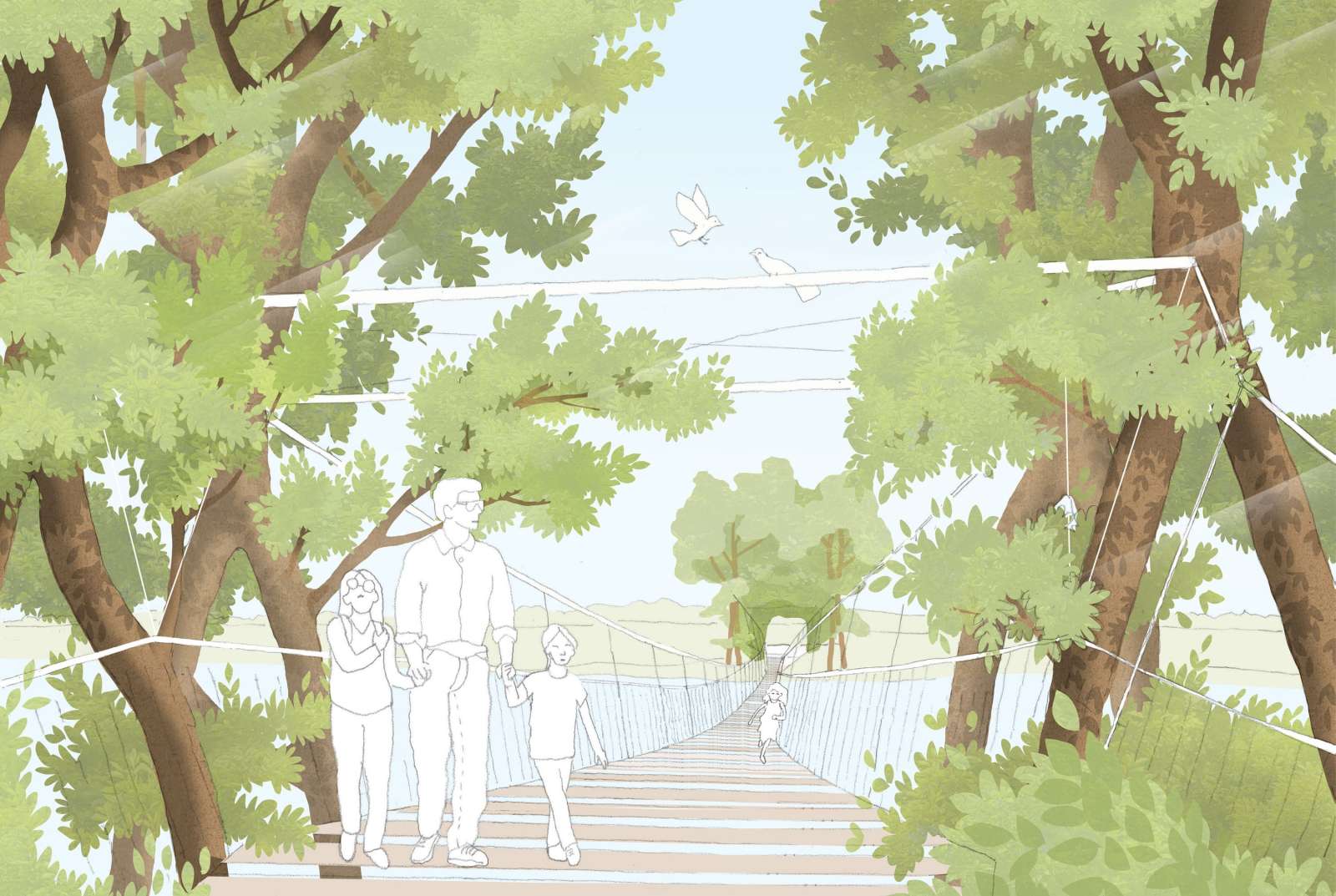In 2Stromland the dynamics and forces of nature are made tangible. The slow processes of change in the landscape are also illustrated by concrete objects. A new bridge over the Lippe will connect the two sides of the river in the future. The concept of a Baubotanik bridge developed in this study understands natural growth as an integral part of the construction, function and aesthetic qualities of architecture.
Location
A site just south of the future mouth of the New Stever River is proposed for the Lippe River crossing. The banks of this straight section can be considered comparatively stable and the riparian areas are less ecologically sensitive than, for example, the impact slope area further southeast.
Situation immediately after planting (structural completion)
The cable forces of the bridge are transferred to transverse beams supported by a temporary timber structure. This structure is anchored to the ground by concrete-free foundations.
The trees are already six to eight meters tall and are connected to each other and to the transverse beams.
Fully developed situation
The trees have fused into a load-bearing structure and the transverse beams have been fully incorporated into this living structure.
All forces can be dissipated by this Baubotanik structure and transferred to the ground through the root system.
The temporary support structures will be deconstructed.
Project
Baubotanik Bridge 2Stromland
What
Case study
Where
Olfen, GER
When
2020
Baubotanik Bridge 2Stromland
What
Case study
Where
Olfen, GER
When
2020
Who
OLA – Office for Living Architecture in cooperation with str.ucture

